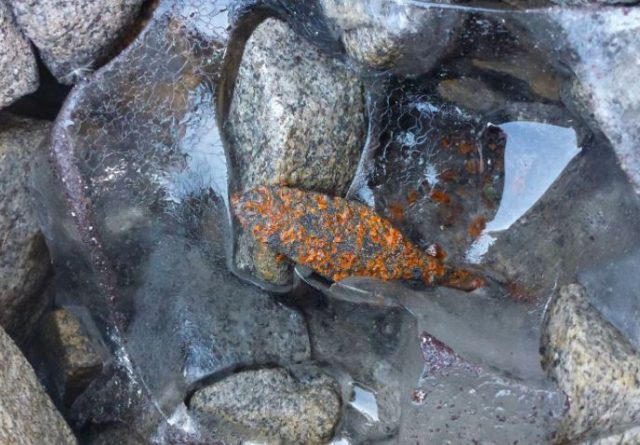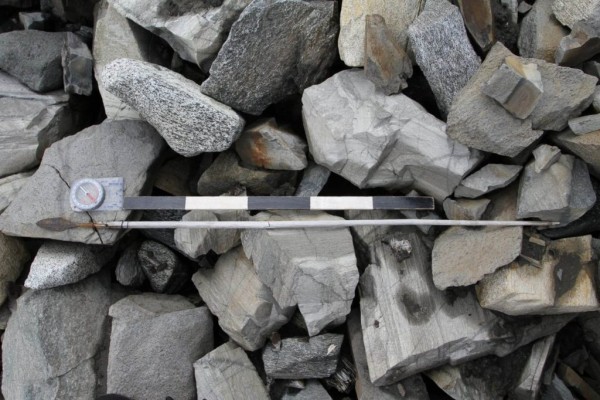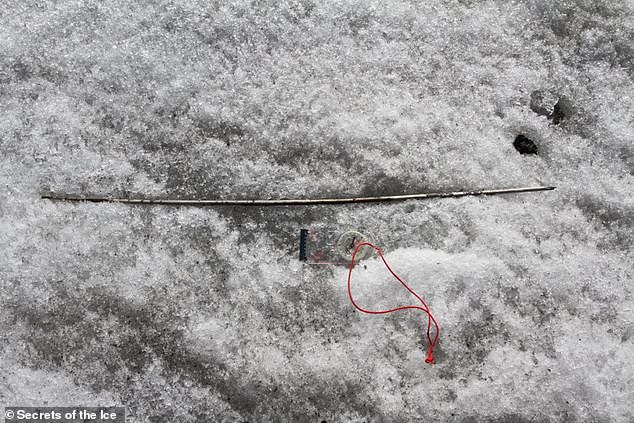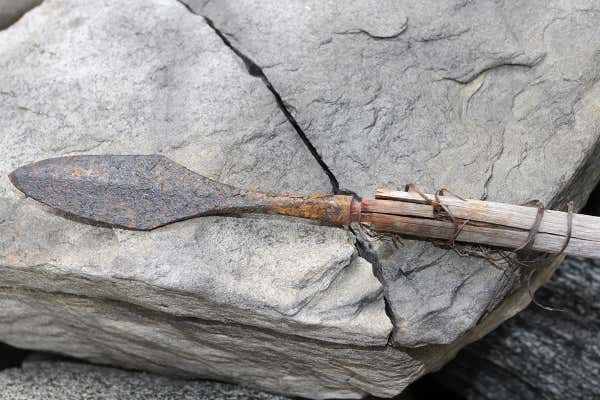The Langfonne ice patch in the Jotunheimen Mountains in central southern Norway has been the site of ice archaeology since 2014 and has recently revealed that sixty eight ancient arrow shafts have been found; some with arrowheads still attached or lying near the shafts.
According to lifeinnorway.net, some of the arrowheads were made of iron, quartzite, bone and slate and even the sinew used to wrap the arrowhead to the shaft still survives on some.
The arrows come from several different time periods. Some are from the Neolithic period between about 3900 and 1700 BC while some are from the 14th century AD.

Normally, the different layers of ice would hold artifacts in order of when they were lodged in the ice but this discovery was different.
Some of the oldest arrows looked like they had been exposed to sunlight and wind while arrows from fifteen hundred years ago are in pristine condition when it is usually the other way around.
According to nationalgeographic.com, thousands of years ago a warm spell caused the ice patch to begin melting which exposed the older items.
As the ice melted the artifacts were pushed around in the meltwater putting them out of place in the order of time. A refreeze locked them back into the ice.
Ice patches, unlike glaciers, are mostly stationary and grow each winter. Lately, ice patches are growing smaller and smaller and according to study co-author Atle Nesje, a glaciologist at the University of Bergen, Langfonne is only half the size that it was in the 1990s.

Originally one large patch, it has since divided into three smaller patches. Langfonne was one of the first ice patch sites that was brought to the attention of archaeologists after a man discovered a thirty three hundred year old leather shoe at the edge of the ice in the summer of 2006 and reported it to archaeologist Lars Pilø, a researcher at the Innlandet County Council Cultural Heritage Department.
The ice patch has yielded reindeer antlers and bones and because it is still a reindeer feeding area scientists believe this was an important hunting ground for thousands of years.
The reindeer move to the ice patch in the summer to avoid the flying insects putting them in a prime position to be shot.
There are few from the Viking age as people in that time period may have not spent much time hunting in favor of trading and that people may have harvested reindeer carcasses for the antlers and bones according to the research paper published in the scientific journal, The Holocene.
This paper is the first scientific information regarding the Langfonne archeology project because the area is a national park and anyone may enter leading to possible disturbance or illegal reclamation of artifacts. The majority of artifacts have been removed and now the public has been made aware of the finds.

Lifeinnorway.net tells us that Lars Pilø remarked, “With the current climate prognosis, most of the ice in the high mountains of Norway will melt away during this century.
The future for the Langfonne ice patch looks bleak. With more melt in the pipeline, Langfonne has surely not given up all its secrets yet. We will continue to monitor the ice here in the years ahead.”
In 2016, a research paper was published by Espen Finstad, Julian Martinsen, Runar Hole and Lars Pilø at journal equinoxpub.com, regarding the find of preserved skis found in the Norwegian ice.
The earliest was found to be from Siberia and was dated to about 6000 BC. Some of the more recent finds have fur covering the underside. Lendbreen ice patch, found in the same county as Langfonne, produced four fragments of either a short ski or a snowshoe made from pine dated from about 791 to 540 BC.
Another Article From Us: Neanderthal Woman’s Walk of Love 90,000 Years Ago Between two Caves 65 Miles Apart
Small holes line the edges which were most likely how the fur lining was attached with sinew. The fur lining was to keep from going too fast on a steep slope as skiing was more for hunting and transport than for recreation as today.
